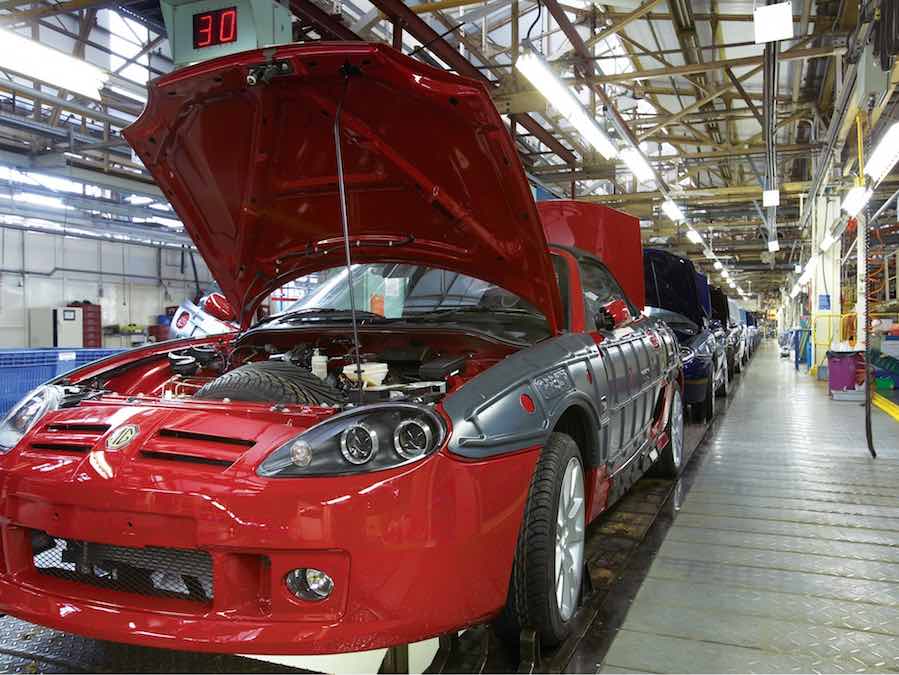It is in perhaps a very small way a moment where those of us involved in the car industry should make a note of where we were when we heard it - the vote for Brexit has claimed, partially, its first casualty although it’s one that many will struggle to notice.
MG, the former Morris Garages and one-time MG Rover Group, has confirmed that production of cars will cease at the famous, infamous Longbridge site in Birmingham. Speaking to the media, the brand’s UK marketing and sales head confirmed that the recent fall in the value of the pound has made it uneconomical to continue assembling cars at the factory, and so all production will now take place in China. "Centralising production demonstrates MG's commitment to the future, as well as its continued focus on attracting and developing the highly-skilled automotive engineering and design talent present in the UK," a spokesperson said in a statement.
It’s something of a second, even third death for the Longbridge site, which was once upon a time the largest car factory in Europe. The plant first opened in 1908, when it was part of the Austin company and it was hugely expanded in the years following the first world war. During the second world war, it made everything from heavy artillery to tank components, before reverting to civilian production again in 1945. It became a lynchpin of the growing British Motor Corporation, with grew to include Austin and Morris brands and it was for decades the home of the original Mini, alongside many other models.
It also became a byword for industrial unrest as BMC became the nationalised British Leyland and began to crumble from within. It has at one time seemed that the plant might get a new lease of life when BMW bought Rover Group (into which the surviving parts of British Leyland had folded) but the German experiment in mass-market British cars failed and in spite of a brief flurry of activity under the optimistic but underfunded MG Rover Group, Longbridge became near derelict as arguments over ownership raged.
Those were eventually sorted out and some small-scale production was revived under the ownership of Shanghai Auto Industrial Company, the Chinese car maker which, after a torturous process, eventually ended up owning the rights to both MG and Rover (albeit not the Rover name - we told you it was torturous). The cars built in recent years at Longbridge have been the new MG range of 3 hatchback and 6 saloon, neither of which are on sale in Ireland. Both cars have been designed and engineered in China, and the Longbridge production has essentially been just fitting out pre-built bodyshells with engines and cabin trim. Production of these models at Longbridge only re-started in 2011.
Around 25 employees will be made redundant in the move, a tiny fraction of the many thousands the factory once employed. Much of the old plant is long gone anyway - demolished when SAIC moved in and shifted the Rover 75 production line to China following MG Rover’s collapse in 2005. What was left was a mere rump, although it does house MG’s UK development centre which does much of the company’s chassis tuning and engine development work, which will continue.
James Scott, MG’s Powertrain Test Senior Manager, said of recent investment in Longbridge that “the money that’s been invested into this new testing facility shows a real commitment to the future of MG. This additional test cell and enhanced rolling road allows us to continue to get the very best performance and economy for MG products.” The story of Longbridge is one of numbers. A vast factory, it stretched over 468-acres at its peak, and once employed 22,000 people (although that was at the peak of wartime employment). Love them or hate them, cars which were iconic for the best wand worst reasons - the Austin 7, the Mini, Morris Minor, Austin 1100, the Morris Marina, the Austin Allegro, the Metro and eventually the Rover 75 were all built here. It may be a quiet, unheralded casualty of Brexit, but Longbridge can also count itself a victim of bungled management, hard-core unions, Heath government prevarication, Thatcherite brutality, the globalisation of car production and finally the sheer apathy of the buyer towards its products. Its final demise now, with minimal redundancies and statements of regret from half a world away, is merely a final indignity for what was once a colossus of industry.







